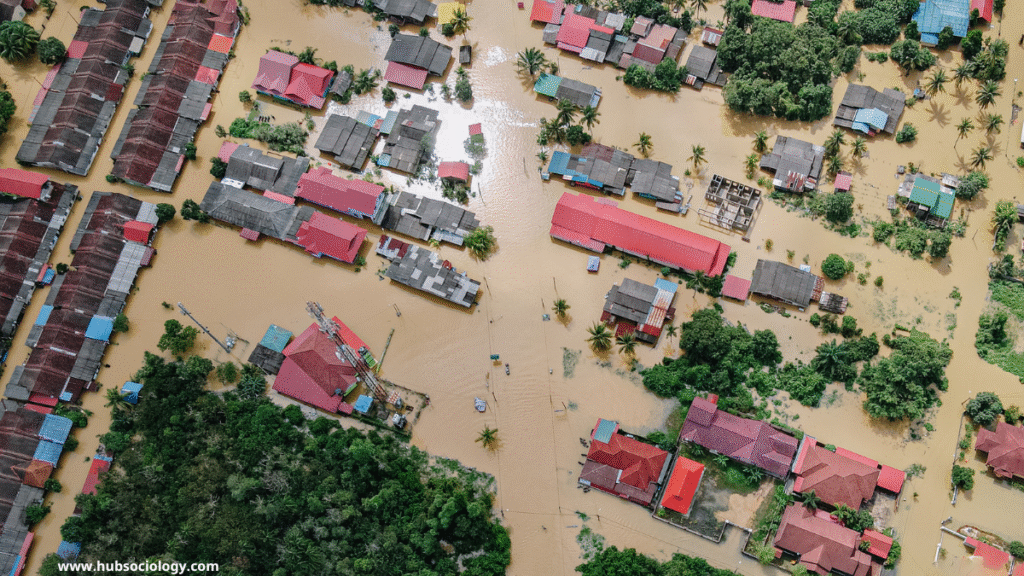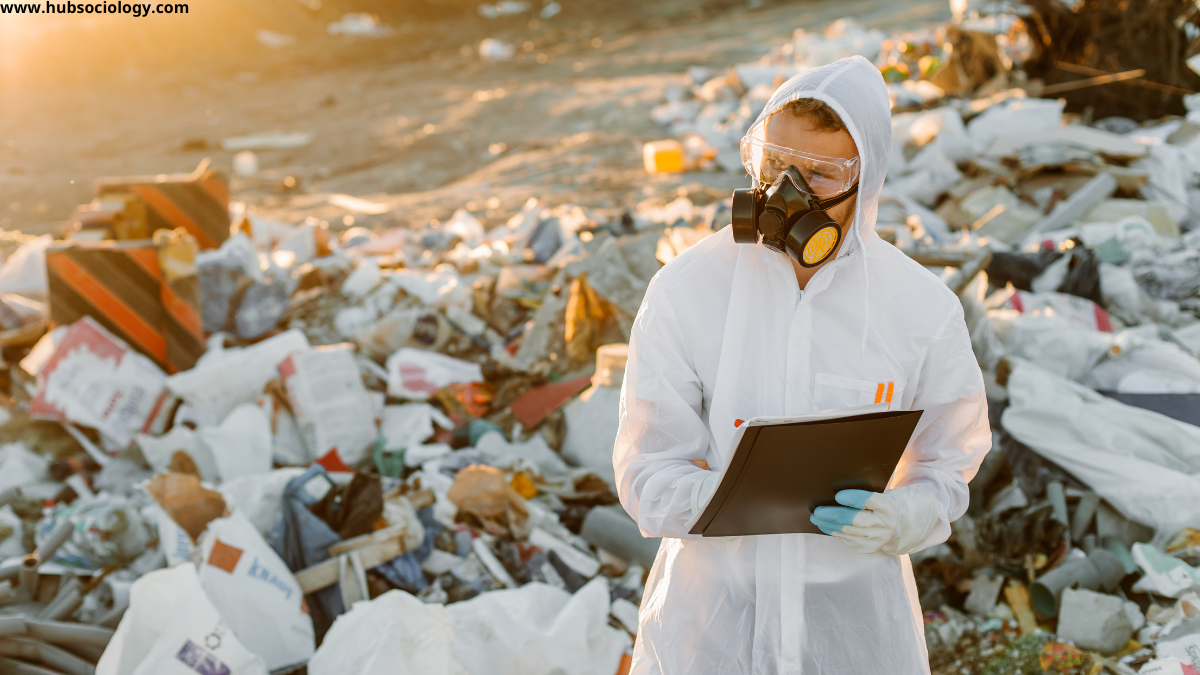Introduction on Vulnerability and Risk Assessment
In the modern world, individuals, communities and societies constantly encounter risks ranging from natural disasters to technological hazards, economic insecurities, and social inequalities. The ability to understand and manage these risks is not only a technical or environmental issue but also deeply rooted in sociological realities. Vulnerability and risk assessment examines how social structures, cultural norms, economic systems, and political institutions shape people’s exposure to hazards and their capacity to cope with crises. From poverty-stricken urban neighborhoods to marginalized rural communities, the patterns of vulnerability reveal how risks are socially constructed and unequally distributed.
This article discusses the meaning of vulnerability, the sociological dimensions of risk assessment, theoretical perspectives, examples, and the significance of adopting a sociological lens to address vulnerabilities in contemporary societies.

Table of Contents
Meaning of Vulnerability
In sociological terms, vulnerability refers to the degree to which individuals or groups are exposed to harm due to their social, economic, political, or cultural position in society. It is not just about being physically at risk but also about lacking the resources, power, or networks needed to cope with, resist, or recover from hazards.
Key sociological aspects of vulnerability include:
- Economic vulnerability – poverty, unemployment, and lack of access to basic resources.
- Social vulnerability – exclusion, discrimination, and weak social networks.
- Cultural vulnerability – beliefs, practices, and values that influence risk perception.
- Political vulnerability – absence of representation, corruption, or ineffective governance.
Thus, vulnerability is a relational concept: it arises from the interaction between individuals and the broader structures of society.
Meaning of Risk Assessment
Risk assessment refers to the systematic process of identifying, analyzing, and evaluating potential hazards to predict their impacts on human life and society. In sociology, risk assessment is not limited to technical measurement but involves understanding how risks are perceived, constructed, and managed in different social contexts.
From a sociological lens, risk assessment asks:
- Who defines what constitutes a “risk”?
- How do social inequalities influence exposure to hazards?
- Why are some groups more resilient than others?
- How do institutions (government, NGOs, communities) manage or ignore risks?
Sociologist Ulrich Beck, in his seminal work Risk Society (1992), argued that modern societies are increasingly shaped by the management of risks, particularly those produced by industrialization and globalization (e.g., pollution, nuclear threats, climate change).
The Sociological Dimensions of Vulnerability
Sociology emphasizes that vulnerability is not evenly distributed but shaped by structural inequalities:

- Class and Economic Inequality
Poor communities often reside in disaster-prone areas (e.g., floodplains, unstable slopes, or polluted industrial zones) due to lack of choice. Limited resources reduce their ability to prepare or recover, deepening vulnerability. - Gender
Women, especially in patriarchal societies, may face greater risk during disasters due to restricted mobility, caregiving responsibilities, and lack of access to resources or decision-making. - Caste and Ethnicity
In countries like India, lower castes or tribal populations are often marginalized from state services, leaving them more exposed to hazards. Similarly, minority ethnic groups worldwide may face systemic neglect. - Urbanization and Migration
Migrants and slum dwellers often live in poorly built housing without proper infrastructure, making them highly vulnerable to natural disasters and epidemics. - Globalization
Global economic interdependence creates new vulnerabilities, such as financial crises, pandemics, and environmental degradation, which disproportionately affect developing nations.
Sociological Approaches to Risk Assessment
Sociologists have developed several perspectives to understand vulnerability and risk:
- Structural-Functionalist Perspective
Risks are seen as disruptions to social order. Institutions (family, government, religion) play a role in maintaining stability by reducing vulnerabilities and creating coping mechanisms. - Conflict Perspective
Risks are unequally distributed because of class, race, gender, or power struggles. Elites may externalize risks onto marginalized groups while protecting themselves. For example, industrial pollution often affects poor neighborhoods rather than affluent areas. - Symbolic Interactionist Perspective
Risk is also socially constructed through perceptions and meanings. People interpret risks differently based on culture, past experiences, and trust in institutions. For instance, some communities may downplay climate change while others perceive it as a major threat. - Ulrich Beck’s Risk Society Theory
Modern societies are increasingly preoccupied with managing risks produced by modernization itself. Unlike traditional dangers (famine, plague), contemporary risks (climate change, cyber threats, nuclear waste) are global, invisible, and harder to manage.
Examples of Vulnerability and Risk Assessment in Society
- COVID-19 Pandemic
The pandemic highlighted global vulnerability but in unequal ways. Wealthier nations had better access to vaccines and healthcare, while poorer countries suffered disproportionately. Within nations, marginalized groups faced higher exposure due to frontline work and limited healthcare access. - Climate Change and Disasters
Rising sea levels threaten coastal communities, but vulnerability is shaped by poverty, governance, and infrastructure. For example, Bangladesh faces recurrent floods, with the poor bearing the greatest losses. - Technological Hazards
Industrial accidents like the Bhopal Gas Tragedy (1984) reveal how poor regulation and negligence expose vulnerable populations to catastrophic risks. - Economic Risks
Financial crises, inflation, and unemployment disproportionately affect low-income families, leading to long-term social insecurity. - Conflict Zones
Refugees and displaced people face compounded vulnerabilities due to statelessness, poverty, and discrimination.
The Role of Institutions in Risk Management
Sociological analysis also highlights the importance of institutions in shaping vulnerability and managing risks:
- Government: Policy frameworks, disaster preparedness, welfare schemes.
- NGOs and Civil Society: Relief, awareness, and advocacy for vulnerable groups.
- Community Networks: Mutual aid, trust, and informal coping mechanisms.
- Media: Constructing perceptions of risk and influencing public response.
The effectiveness of risk assessment depends on whether these institutions address inequalities or perpetuate them.
Importance of Sociological Approach to Vulnerability and Risk
- Reveals Inequalities – Sociology highlights why risks affect some groups more than others.
- Encourages Inclusive Policies – By considering class, gender, caste, and ethnicity, sociological assessment ensures fairer disaster management.
- Connects Local and Global Risks – It links everyday vulnerabilities with global challenges such as climate change and pandemics.
- Shifts Focus from Hazard to Social Context – Instead of only studying the hazard, sociology emphasizes people’s capacity to cope and recover.
Conclusion on Vulnerability and Risk Assessment
Vulnerability and risk assessment are not merely technical exercises but deeply embedded in the social fabric. Risks are shaped by inequalities, perceptions, and institutional arrangements. Sociological perspectives reveal that hazards affect people differently, depending on their social, economic, and political positions. Addressing vulnerabilities requires not just disaster preparedness or technological solutions but also broader structural reforms aimed at reducing inequality, ensuring justice, and empowering marginalized groups.

In today’s interconnected world, adopting a sociological lens is essential to create resilient communities capable of withstanding future risks.
Do you like this this Article ? You Can follow as on :-
Facebook – https://www.facebook.com/hubsociology
Whatsapp Channel – https://whatsapp.com/channel/0029Vb6D8vGKWEKpJpu5QP0O
Gmail – hubsociology@gmail.com
Topic-related questions on Vulnerability and Risk Assessment
5 Marks Questions on Vulnerability and Risk Assessment
- Define vulnerability in the sociological context.
- Mention two sociological factors that increase vulnerability during disasters.
- What role does poverty play in shaping vulnerability?
- State Ulrich Beck’s idea of a “risk society.”
- Give two examples of social groups disproportionately affected by risks.
10 Marks Questions on Vulnerability and Risk Assessment
- Explain the relationship between social inequality and vulnerability.
- Discuss how gender influences vulnerability during natural disasters.
- Examine the sociological significance of risk assessment in modern societies.
- How does globalization create new forms of vulnerability? Give examples.
- Describe the role of institutions (government, NGOs, and community networks) in risk management.
15 Marks Questions on Vulnerability and Risk Assessment
- Critically analyze Ulrich Beck’s Risk Society theory with examples from contemporary issues.
- Discuss vulnerability and risk assessment in the context of the COVID-19 pandemic from a sociological perspective.
- Evaluate different sociological approaches (functionalism, conflict theory, symbolic interactionism) to understanding vulnerability.
- “Risks are socially constructed and unequally distributed.” Elaborate with suitable illustrations.
- Examine how climate change highlights the sociological dimensions of vulnerability and risk assessment in developing countries.

1 thought on “Vulnerability and Risk Assessment: A Sociological Perspective”